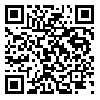Volume 12, Issue 46 (fall 2009)
2009, 12(46): 143-153 |
Back to browse issues page
Download citation:
BibTeX | RIS | EndNote | Medlars | ProCite | Reference Manager | RefWorks
Send citation to:



BibTeX | RIS | EndNote | Medlars | ProCite | Reference Manager | RefWorks
Send citation to:
Salari B, SHamsedin Said M, Askarian Sardari A. Effects of NaCl Priming on Agronomical and Physiological Characters in Corn (single cross 704) under Salt Stress Conditions. Journal of Crop Production and Processing 2009; 12 (46) :143-153
URL: http://jcpp.iut.ac.ir/article-1-1114-en.html
URL: http://jcpp.iut.ac.ir/article-1-1114-en.html
, Mohadeseh_Said@yahoo.com
Abstract: (23959 Views)
In order to study the effect of NaCl priming on some agronomical and physiological traits of corn (single cross 704), an experiment was conducted at Agricultural Research Station of Bahonar University of Kerman in 2005. The experimental design was completely randomized designs with 3 replications. Treatments were a combination of all different levels of two factors including salinity levels (1, 4, 8, 12, 16 dS/m) and salinity solution for NaCl priming (1, 4, 8, 12, 16 dS/m). Results showed that salinity and NaCl priming had significant effects on total emergence, mean time to emergence, root and stem length, number of leaf, relative water content, ion leakage and K+/Na+. Mean comparison showed that increasing salinity decreased all plant characteristics (with the exception of mean time to emergence and ion leakage) by %49.5, %33.49, %23.97, %18.64, %14.05 and %40.20, respectively. However, increasing salinity led to 1.2 and 1.3 increase in mean time to emergence and ion leakage of leaves, respectively. Mean comparison also showed that NaCl priming decreased negative effects of salt stress, and all mentioned traits under NaCl priming increased as compared with control. The results showed that NaCl priming is a useful method for increasing salt tolerance in corn plant.
Send email to the article author
| Rights and permissions | |
 | This work is licensed under a Creative Commons Attribution-NonCommercial 4.0 International License. |






